

Xiaomi Mobile SSD 1TB Launched for 649 Yuan ($93).
Xiaomi, although well-known for its smartphones, has a whole lineup of accessories and other products in different categories of technology. Continuing the trend, the company has launched its first hard drive, called Xiaomi Mobile SSD 1TB. As the name itself indicates, the newly announced hard drive from the brand has 1TB of capacity and is a Solid State Drive (SSD) which is about 10 times faster than the traditional hard drive. For the Xiaomi Mobile SSD 1TB, the company is launching the product through Crowdfunding which will start on 14th December. Those who back the crowdfunding campaign will get the product for 649 yuan (~$93), and the company suggested retail price is 799 yuan (~$114). It comes with an exquisite design in a metal body having a light-colored aluminum shell that has been processed with fine sandblasting and anodizing. As for the performance, the sequential read/write rate can reach up to 200 MB/s, and a 4K high-definition movie can be uploaded or copied within a minute. The company has also revealed that the Xiaomi Mobile SSD 1TB is compatible with several different types of devices, including those running Windows 7 or later, macOS X 10.6 or later, Android 9 or later, Linux, and more.
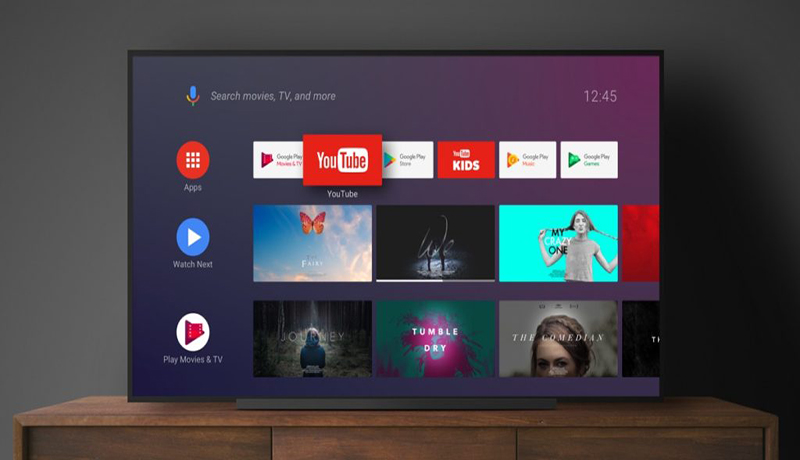
Android 13 for Android TV releases with performance improvements and additional features
Android TV 13 is now officially out, but you probably shouldn't expect to see it on any consumer devices in the immediate future. This is more of a developer milestone than anything else since Android TV updates are generally on a slower and less broad schedule than regular Android ones. Even Google's own Chromecast devices just received Android TV 12 earlier this year. Even if you were to receive an OTA today, it's unlikely that you will notice any major changes since most of the new additions to version 13 are backend ones, targeting developers. The UI is mostly the same. You can read the full changelog here, but we will still point out some of the highlights. User-adjustable resolution and refresh rate on supported HDMI source devices are finally a thing. Power saving on an OS level has been improved in general, including the addition of methods allowing the device to pause playback if the HDMI signal changes to something new. The AudioManager APIs now support anticipatory audio routes for supported audio formats and speaker groups. There is a new Keyboard Layouts API in Android TV 13, which allows the selection of different language layouts for external keyboards. Some changes to the way keyboard and controller button mapping is handled are applied as well, specifically for use by game developers. Privacy and accessibility have been improved as well. Hardware mute switch states, where available, are now reflected in the system privacy controls, and there are new user controls for microphone access by Assistant software. As we said, you are unlikely to see Android TV 13 on your consumer device any time soon, but if you are a developer, you can now start using the full release of the OS on your ADT-3 dev kit or Android Emulator for TV.
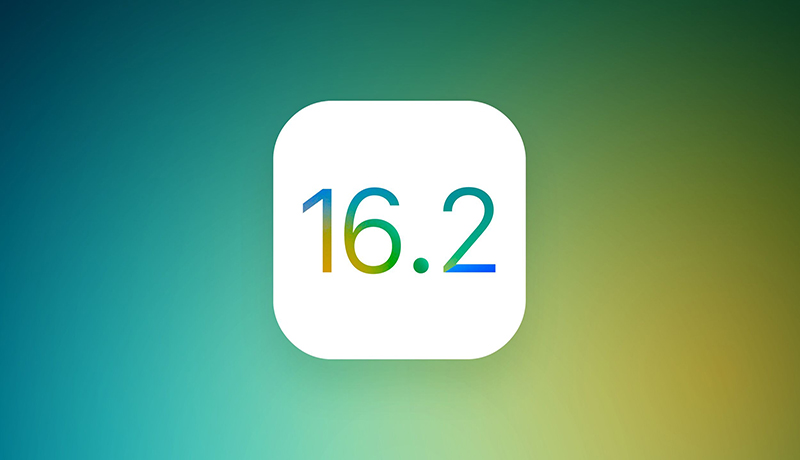
Apple releases ios 16.2 and ipadOS 16.2 with Freeform Apple Music sing on board
A few hours ago the latest versions of Apple's mobile operating systems started going out to all supported devices. We're talking, of course, about iOS 16.2 and iPadOS 16.2. With these releases, Freeform makes its debut. This is a new app that is designed for "creative brainstorming and collaboration", according to Apple. It lets you organize and visually lay out content on a "flexible canvas", with sharing and collaboration options built-in. "A wide range of files" can be added and previewed inline without ever leaving the board. Freeform boards are stored in iCloud, so they sync across devices.
Free form
Additionally, Apple Music Sing, the previously announced karaoke feature, is built into these releases too. There's a new option expanding the total number of iCloud data categories protected via end-to-end encryption to 23, including iCloud Backup, Notes, and Photos, new settings letting you hide the wallpaper or notifications when Always-On display is enabled on iPhone 14 Pro and Pro Max, new Sleep, Medications, and Activity widgets, and SharePlay support in Game Center for multiplayer games so you can play with the people you are on a FaceTime call with. Apple Music Sing You also get a bunch of bug fixes and various improvements, including better search in Messages, news articles in Weather relevant to that location, Participant Cursors in Notes letting you see live indicators when others update shared notes, AirDrop automatically reverting to Contacts Only after 10 minutes to prevent unwanted requests to receive content, and Crash Detection optimizations on iPhone 14 and 14 Pro models. The iPads get external display support for up to 6K resolution on iPad Pro 12.9" (5th gen and later), iPad Pro 11" (3rd gen and later), and iPad Air (5th gen), the ability to drag and drop files and windows to a connected display and back, and support for using up to four apps on the iPad display and four on the external one. An issue that caused multitouch gestures to become unresponsive while using the Zoom accessibility feature has been fixed, and Tracking Notifications now alert you if an AirTag separated from its owner is nearby and has recently played a chime to indicate that it's moving. These updates also address more than 30 security vulnerabilities, which makes it even more important to install the new software as soon as you can. Given that Apple doesn't generally do staged rollouts, iOS 16.2 and iPadOS 16.2 should be available to all already. If you haven't received a notification yet, you can manually check for an update and it should immediately start to download.

Apple's Upcoming AR/VR Headset To Run xrOS Operating System
Apple has been working on its AR/VR headset for years now and if the reports are to be believed, then the company is set to launch the device in a couple of months. There have been reports about the device being powered by its own operating system. Now, as per the latest report, the AR/VR headset from Apple will come powered by xrOS, which is a dedicated operating system for the mixed reality headset from the Cupertino-based tech giant. According to the report from Bloomberg, Apple has decided to call the software powering the augmented reality and virtual reality headset xrOS instead of the previously rumored RealityOS or rOS. This new information about the software comes at a time when the technology giant is expected to be preparing for the launch of the headset sometime in 2023. Along with the headset having its operating system, it will also have a dedicated app store, similar to the Apple TV and Apple Watch. If the rumors are to be believed, then the device from Apple will be a Mixed Reality device similar to the Microsoft HoloLens, which will support both Augmented Reality and Virtual Reality. The XR term stands for Extended Reality, which includes both augmented and virtual reality. Apple has redesigned some of its applications like Maps and Messenger for a better experience on an AR/VR headset, but the company is also developing a Software Development Kit, allowing third-party developers to create applications for the new platform. While there’s no solid information about the device getting launched, some reports indicate that the product could get launched in the first half of 2023 and will be available for purchase from the second half of the year.

Mediatek Dimensity 8200 is official with 3.1 GHz CPU and ray tracing
Mediatek introduced the Dimensity 8200 - a new chipset that brings flagship-level experience to premium smartphones. It is built on the 4 nm process technology and comes with HyperEngine 6.0, which supports Vulkan SDK for raytracing in gaming, FPS improvement and smart resource optimization. Dimensity 8200 is Mediatek’s first product of the series with one “big” CPU core - Cortex-A78 at 3.1 GHz, three more at 3.0 GHz for performance, and four Cortex-A55 at 2.0 GHz for efficiency.
Mediatek brought improved camera support and Imagiq 785 ISP, but the big changes from predecessors are fueled by the mightier processor. It will allow HyperEngine, a set of features dedicated to improving gaming performance in smartphones in the flagship-killer territory. Devices with Dimensity 8200 will have the chance to intelligently adapt the refresh rate when a game is powered - the chip will adjust automatically, according to the frame rate. Connectivity-wise, the new chip inherited from its predecessors the dual-5G connectivity, Wi-Fi 6E, Bluetooth 5.3 and the downlink speed. The max refresh rate increased ever so slightly, but it is still up to the manufacturers to actually enable this feature on their smartphones.
| Dimensity 8200 | Dimensity 8100 | Dimensity 8000 | |
| Node | 4 nm | 5 nm | 5 nm |
| CPU (big) | 1x Cortex-A78 @ 3.1 GHz | - | - |
| CPU (medium) | 3x Cortex-A78 @ 3.0 GHz | 4x Cortex-A78 @ 2.85 GHz | 4x Cortex-A78 @ 2.75 GHz |
| CPU (small) | 4x Cortex-A55 @ 2.0 GHz | 4x Cortex-A55 @ 2.0 GHz | 4x Cortex-A55 @ 2.0 GHz |
| RAM | LPDDR5 (up to 6,400 Mbps) | LPDDR5 (up to 6,400 Mbps) | LPDDR5 (up to 6,400 Mbps) |
| Storage | UFS 3.1 | UFS 3.1 | UFS 3.1 |
| GPU | Mali-G610 MC6 | Mali-G610 MC6 (20% faster than 8000) | Mali-G610 MC6 |
| Display | FHD+ @ 180Hz, WQHD+ @ 120Hz | FHD+ @ 168 Hz, WQHD+ @ 120 Hz | FHD+ @ 168 Hz |
| Camera (stills) | 320 MP | 200 MP (5 Gpixel/s IPS) | 200 MP (5 Gpixel/s IPS) |
| Camera (video) | 4K @ 60 fps (HDR10+) | 4K @ 60 fps (HDR10+)g | 4K @ 60 fps (HDR10+) |
| 5G | 4.7 Gbps downlink | 4.7 Gbps downlink | 4.7 Gbps downlink |
| Wi-Fi | Wi-Fi 6E (2x2) | Wi-Fi 6E (2x2) | Wi-Fi 6E (2x2) |
| Bluetooth | 5.3 | 5.3 | 5.3 |
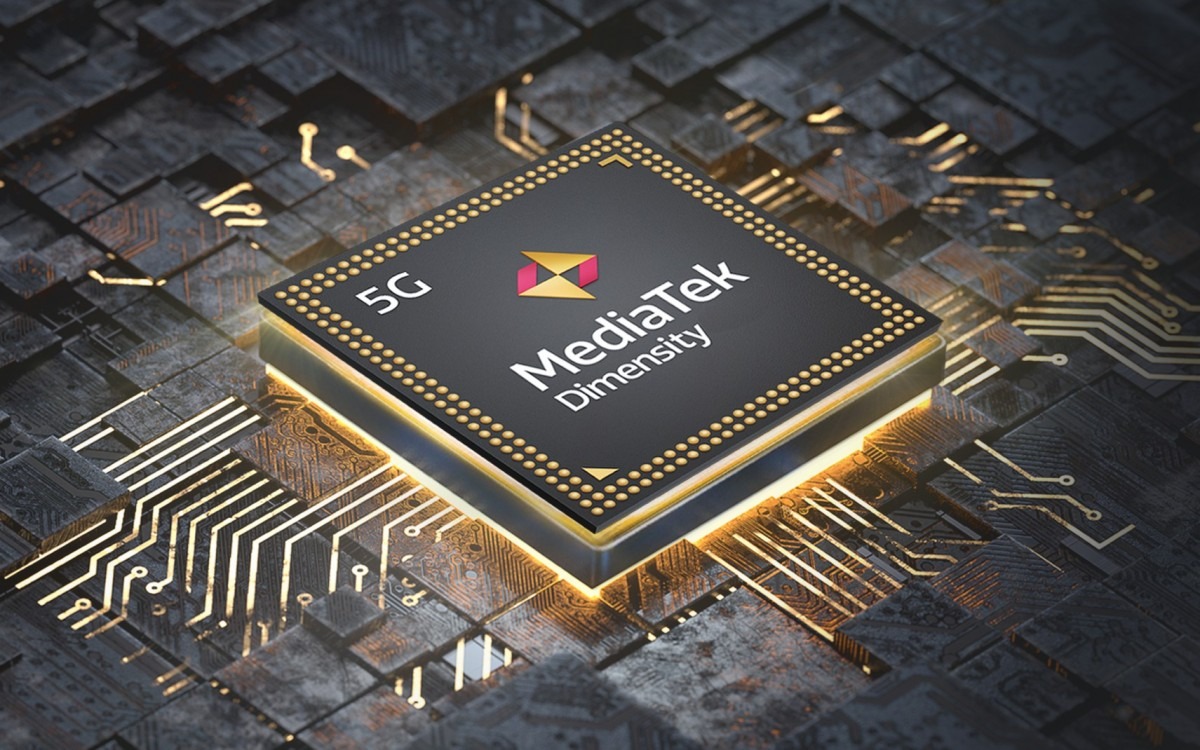 Speaking
of smartphones, we already have devices with Dimensity 8200. The first one on
the market is the iQOO Neo7 SE, announced earlier today in China. Xiaomi said on
Weibo it is also planning to launch a Redmi K60E phone but did not give any time
frame.
Speaking
of smartphones, we already have devices with Dimensity 8200. The first one on
the market is the iQOO Neo7 SE, announced earlier today in China. Xiaomi said on
Weibo it is also planning to launch a Redmi K60E phone but did not give any time
frame.
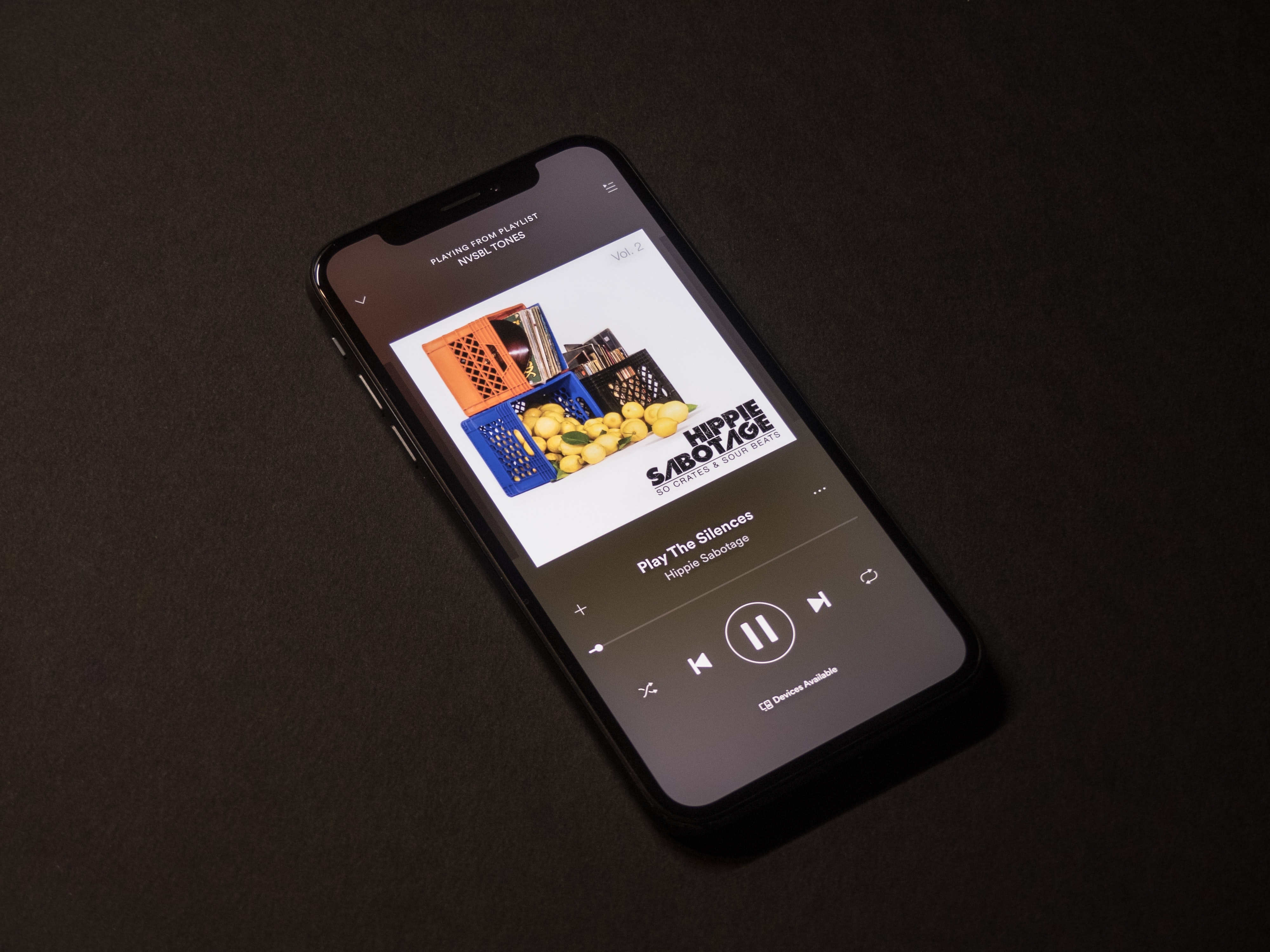
Apple announces 'Apple Music Sing' a new karaoke experience
Today Apple unveiled a new feature that's coming to its Apple Music streaming service "later this month". It's called Apple Music Sing and will be available to all Apple Music subscribers worldwide, on iPhones, iPads, and the new Apple TV 4K. Think of it like Apple's version of karaoke and you won't be very far off. Apple Music Sing is an expansion of the lyrics experience, which lets you sing along to your favorite songs. You can adjust the song's vocals level so you can sing together with the artist, or even take the lead and silence them entirely if that's what you wish. Also, vocal lines sung simultaneously can animate independently from the main vocals, so you can keep the backing vocals to make it easier to follow the tune. Of course, the lyrics are displayed in real-time, otherwise, this wouldn't work. There's even a Duet view which shows multiple vocalists in a song on opposite sides of the screen so you can have a friend or family member join you in the fun. At the same time, Apple Music is launching a suite of more than 50 dedicated companion playlists that feature "all the epic songs, duets, choruses, and anthems that have been compelling people all around the world to sing", the company notes in its official press release. And all of these will, naturally, be fully optimized for Apple Music Sing.

Samsung Galaxy Unpack Event Will Be Held Early February 2023
Samsung Galaxy S23 has been in the news for quite some time now. We’ve already had leaks and rumors detailing the specifications of the upcoming smartphones. Now, a new report reveals that the Korean company will launch the Galaxy S23 series at the Unpacked event scheduled for the first week of February. A Korean publication, citing a Samsung Electronics executive with knowledge of the matter, reports that Samsung’s Galaxy S23 Unpacked event will take place in early February 2023. “The S23 series will be shown during our own Unpacked event in the United States, which will be held in February,” said the source. The exec did not provide the name of the city or the exact launch date but the publication claims the event could happen in San Francisco. This will be the first in-person Unpacked event since the pandemic. This new report contradicts rumors that the company might unveil the device during CES 2023 in Las Vegas. Since Samsung has never used CES for launching Galaxy S devices before, the odds of that happening are very slim anyways. The Galaxy S23 lineup is expected to include three models— Galaxy S23, Galaxy S23 Plus, and the Galaxy S23 Ultra. All smartphones will be powered by Snapdragon 8 Gen 2 SoC, with no Exynos chipset in any region this time. The processor is said to have a higher clock speed than the actual models, offering slightly better performance. The top-of-the-line Galaxy S23 Ultra is reported to have a 200-megapixel sensor primary sensor, accompanied by a 10-megapixel 10x zoom sensor and a 12-megapixel ultra-wide-angle lens. It is expected to feature an AMOLED panel with a peak brightness of 2,200 nits.
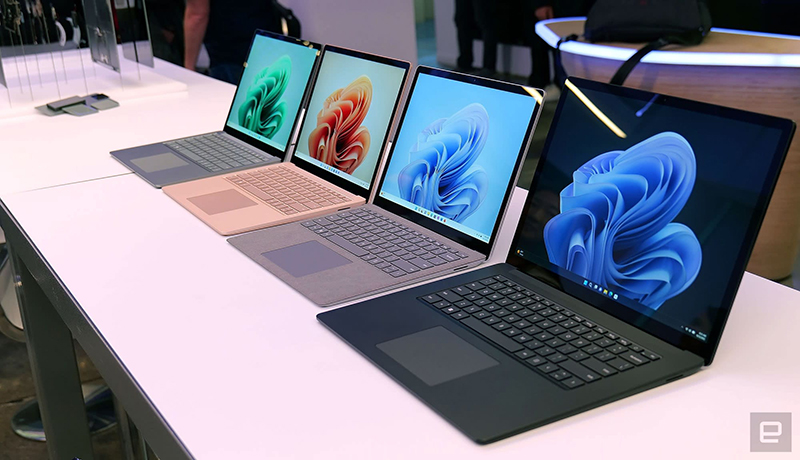
Microsoft Surface Laptop 5 launched with 12th gen Intel CPU
Apart from launching the Surface Pro 9 and the Surface Studio 2+, Microsoft has also announced the Surface Laptop 5. It is a lightweight and thin notebook, measuring around 1.29kg. It has a thickness of 14.5mm. The Surface Laptop 5 is powered by the 12th generation Intel processors and comes in two screen sizes. Continue reading to find out the specifications and price of the device.
Microsoft Surface Laptop 5 specification & features
Microsoft Surface Laptop 5 specifications and features The Microsoft Surface Laptop 5 comes in 13.5-inch and 15-inch screen sizes. The PixelSense display available on the device offers a 2256 x 1504 pixels resolution, a 3:2 aspect ratio, a 1300:1 contrast ratio, and Dolby Vision IQ support. The device comes preloaded with Windows 11 Home. The 13.5-inch Surface Laptop comes with an Intel Core i5-1235U / i7-1255U processor, whereas the 15-inch edition gets a Core i7-1255U processor. All variants come with 8 GB / 16 GB / 32 GB of LPDDR5x RAM and 256 GB / 512 GB / 1 TB of SSD storage.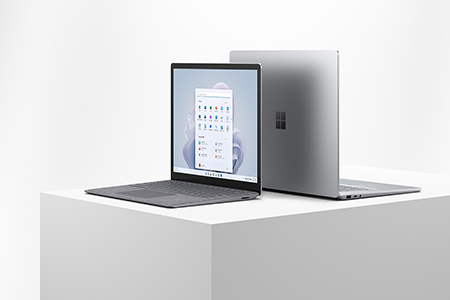 The 13.5-inch edition offers up to 18 hours of battery life, while the larger
model can last for up to 17 hours. On the connectivity front, it offers 1 x
USB-C Thunderbolt 4, 1 x USB-A, 1 x Surface Connect port, a 3.5mm audio jack,
Wi-Fi 802.11ax, and Bluetooth 5.0. It comes with other features such as Windows
Hello face sign-in, Surface Pen support, Omnisonic speakers with Dolby Atmos,
and dual far-field microphones. Lastly, the 13.5-inch variant comes with an
Alcantara keyboard finish.
The 13.5-inch edition offers up to 18 hours of battery life, while the larger
model can last for up to 17 hours. On the connectivity front, it offers 1 x
USB-C Thunderbolt 4, 1 x USB-A, 1 x Surface Connect port, a 3.5mm audio jack,
Wi-Fi 802.11ax, and Bluetooth 5.0. It comes with other features such as Windows
Hello face sign-in, Surface Pen support, Omnisonic speakers with Dolby Atmos,
and dual far-field microphones. Lastly, the 13.5-inch variant comes with an
Alcantara keyboard finish.
Microsoft Surface Laptop 5 price and availability
The Surface Laptop 5 comes in four colors Platinum, Sage, Black, and Sandstone. The 13.5-inch variant starts at $999, whereas the 15-inch edition starts at $1,299. It will be available for purchase in different markets starting on Oct. 25.
Samsung Galaxy Unpack Event Will Be Held Early February 2023
Samsung Galaxy S23 has been in the news for quite some time now. We’ve already had leaks and rumors detailing the specifications of the upcoming smartphones. Now, a new report reveals that the Korean company will launch the Galaxy S23 series at the Unpacked event scheduled for the first week of February. A Korean publication, citing a Samsung Electronics executive with knowledge of the matter, reports that Samsung’s Galaxy S23 Unpacked event will take place in early February 2023. “The S23 series will be shown during our own Unpacked event in the United States, which will be held in February,” said the source. The exec did not provide the name of the city or the exact launch date but the publication claims the event could happen in San Francisco. This will be the first in-person Unpacked event since the pandemic. This new report contradicts rumors that the company might unveil the device during CES 2023 in Las Vegas. Since Samsung has never used CES for launching Galaxy S devices before, the odds of that happening are very slim anyways. The Galaxy S23 lineup is expected to include three models— Galaxy S23, Galaxy S23 Plus, and the Galaxy S23 Ultra. All smartphones will be powered by Snapdragon 8 Gen 2 SoC, with no Exynos chipset in any region this time. The processor is said to have a higher clock speed than the actual models, offering slightly better performance. The top-of-the-line Galaxy S23 Ultra is reported to have a 200-megapixel sensor primary sensor, accompanied by a 10-megapixel 10x zoom sensor and a 12-megapixel ultra-wide-angle lens. It is expected to feature an AMOLED panel with a peak brightness of 2,200 nits.
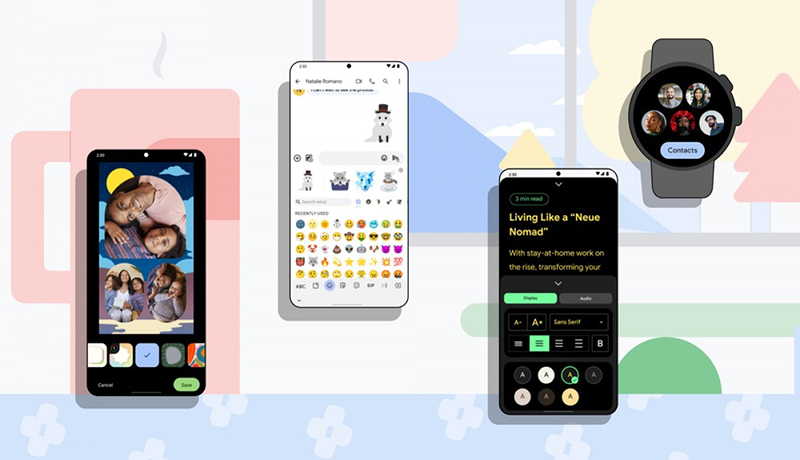
Google Announces New Features For Android And Wear OS
Android phones continue to evolve both in software and hardware. While manufacturers such as Samsung and Qualcomm largely develop their hardware, Google is responsible for the development of the software. Lastly, the company brings several new features for Android phones and Wear OS smartwatches. These features, which are expected to be available in a short time, will bring many innovations to the Android interface we love.
New Android features are on the way
Emoji Kitchen also has new emojis
New reading mode on Android
New YouTube Home screen Search widget
Cast videos directly from the Google TV
Digital Car Key sharing
New Wear OS features
SCIENCE BLOG POSTS

NASA’s Juno spacecraft’s mission has lasted longer than expected
Juno was slated to complete 34 orbits of Jupiter. It’s now on orbit 47
Juno’s unprecedented views of Jupiter and its moons are a gift that keeps on giving. The NASA spacecraft was originally slated to end its mission in 2018 after completing 34 orbits of the giant planet. It’s now on orbit 47. How long scientists will get this front-row view of these worlds isn’t clear, particularly as the spacecraft zooms ever closer to the gas giant and the powerful, destructive radiation of its magnetosphere. But Juno is tough, said space physicist Scott Bolton, principal investigator for the Juno mission, at a December 14 news conference in Chicago at the American Geophysical Union’s fall meeting. The spacecraft “is built like an armored tank, and its shields are holding,” said Bolton, of the Southwest Research Institute, which has headquarters in San Antonio. After entering a wide orbit around Jupiter in 2016, Juno’s images quickly began to help scientists peer into the planet’s mysteries, including a geometric array of cyclones around its poles and the strange, convoluted shape of its magnetic field (SN: 3/7/18; SN: 9/5/18). Juno spied lightning storms zipping across the tops of the planet’s clouds, and revealed that Jupiter is the only planet other than Earth known to host ephemeral, lightning-generated atmospheric glows known as sprites and elves (SN: 8/5/20; SN: 11/2/20). Juno has also passed by some of the planet’s moons, flying by Ganymede in 2021. Ganymede “is bathed by Jupiter’s magnetic field,” and Juno was able to observe, among other things, a tug of war of magnetic field lines between the planet and its moon, said space physicist Thomas Greathouse, also of the Southwest Research Institute. In September, Juno flew by Jupiter’s moon Europa, capturing in new detail the chaotic crisscrosses of cracks, ridges and bands in the moon’s icy surface. Now the spacecraft is on its way toward Io, the innermost moon. While Juno seems to be going strong, “the end could come in two different ways,” Bolton said. Juno could become too degraded by the intense radiation to function — or it could simply run out of propellant, which is needed to keep its antennas pointed toward Earth. If that happens, “it could be collecting data, but can’t send it back.”

No, Yellowstone isn’t about to erupt, even after more magma was found
A new study offers the best views yet beneath the supervolcano
More liquid magma lurks beneath the Yellowstone supervolcano than scientists once thought. But don’t panic: That amount of magma, researchers say, is still nowhere near enough to portend an eruption any time soon. That reassurance comes courtesy of new state-of-the-art seismic images that give the sharpest picture yet of what lies beneath Yellowstone. “It’s like getting a better lens for your camera. Things are coming into more focus,” says Michael Poland, a geophysicist who was not involved in the research. “We’re even less worried about an eruption now — and I wasn’t worried before,” adds Poland, who is the scientist-in-charge at the U.S. Geological Survey’s Yellowstone Volcano Observatory in Vancouver, Wash. The volcano beneath Yellowstone National Park has garnered interest — and worry — because it has had some of the most explosive, dramatic eruptions in the geologic record, he says. In the last 2.1 million years alone, Yellowstone has had three catastrophic eruptions, generating continent-wide ashfalls and disrupting the global climate. The most recent of those catastrophic outbursts was about 631,000 years ago, forming a crater about 70 kilometers across (SN: 1/2/18). Yellowstone’s subterranean magma chambers mostly contain hardened, cooled crystals that are mixed in with some amount of molten material. How much magma there is relative to crystals can determine how ready a volcano is to erupt. The average amount of liquid magma in the volcano’s underbelly is between 16 and 20 percent, Ross Maguire, a geophysicist at the University of Illinois Urbana-Champaign, and colleagues report in the Dec. 2 Science. The “critical melt fraction” at which the volcano might be prepared to erupt is more like between 35 and 50 percent, the team notes. Previously, researchers had estimated Yellowstone’s melt fraction as between 5 and 15 percent. The new estimates don’t represent an actual change — they’re based on a reanalysis of existing seismic data that required far more computational power than was possible in the past. “We’re not absolutely pushing the limit in terms of what we can do,” Maguire says, “but we’re getting kind of close.
Peering beneath Yellowstone
To “see” beneath the surface, scientists use information gleaned from the speeds of different types of seismic waves as they travel through the ground. Seismic waves known as “S waves” are particularly useful when looking for melt because these waves slow down considerably when they encounter any liquid, such as water or molten magma. Researchers use the time it takes for an S wave to travel from a transmitting source to a receiver, compared with the time it takes for other types of seismic waves that don’t slow down in liquids, to estimate how much melted magma there is. Before the rise of supercomputers, scientists would imagine the seismic waves as moving along a simple line from point A to point B. Then they would convert the travel time for the wave to a velocity and from there estimate some amount of liquid present. But waves don’t really move in a line; they radiate outward. They diffract. When encountering a subsurface feature that could slow them down, they might bend around it rather than barrel through it. Those additional wave movements add a lot of fine detail to the picture — but they also require a lot of computational power. Today, such calculations are possible. So Maguire and colleagues used this more modern way of looking at seismic waves — called full waveform tomography — to reanalyze existing seismic data from Yellowstone. Peering between three and eight kilometers underground, the team recorded S waves as slow as about 2.1 kilometers per second, occurring near the center of Yellowstone’s caldera. That’s appreciably slower than previous estimates of 2.7 km/s, Maguire says, pointing to more melt. It’s not certain how the melted part of the magma is distributed. But the most likely scenario is that most of the liquid is isolated, tiny amounts of melt locked away in the spaces between the hardened crystals. Still, the team notes, it can’t rule out the possibility that there are larger pockets of molten magma scattered about.Yellowstone set to simmer?
One interesting implication, Maguire says, is that “Yellowstone may spend large portions of its life cycle with higher melt fractions than thought.” That contradicts the classic view that the volcano’s magma chambers are usually filled with cooled crystals, punctuated by rapid injections of magma before an eruption. Instead, Yellowstone may just be in a long-standing simmering state. But a bit of simmering is a far cry from about to erupt, Poland says, and these new findings “help to drive home the point that this system is mostly solid.” That’s probably why it hasn’t erupted even small amounts of magma in nearly 70,000 years. That doesn’t mean Yellowstone is quiescent: It’s still a hot, active volcanic system with hazards, Poland notes. For example, in recent decades there have been deadly steam explosions and landslide-triggering earthquakes (SN: 1/11/21). Those more likely hazards don’t get as much attention as fears of a catastrophic eruption. “It’s kind of a bogeyman for people and a clickbait topic, and it’s sad,” Poland says. “It’s an interesting place that has so much to offer, and people are focused on the thing that won’t happen in our lifetime.”
Sleep deprivation may make people less generous
A lack of sleep depresses activity in brain regions linked to social behavior, brain scans show
Lack of sleep has been linked to heart disease, poor mood and loneliness (SN: 11/15/16). Being tired could also make us less generous, researchers report August 23 in PLOS Biology. The hour of sleep lost in the switch over to Daylight Savings Time every spring appears to reduce people’s tendency to help others, the researchers found in one of three experiments testing the link between sleep loss and generosity. Specifically, they showed that average donations to one U.S.-based nonprofit organization dropped by around 10 percent in the workweek after the time switch compared with four weeks before and after the change. In Arizona and Hawaii, states that do not observe Daylight Savings Time, donations remained unchanged. With over half of the people living in parts of the developed world reporting that they rarely get enough sleep during the workweek, the finding has implications beyond the week we spring forward, the researchers say. “Lack of sleep shapes the social experiences we have [and] the kinds of societies we live in,” says neuroscientist Eti Ben Simon of the University of California, Berkeley. To test the link between sleep loss and generosity, Ben Simon and her team first brought 23 young adults into the lab for two nights. The participants slept through one night and stayed awake for another night. In the mornings, participants completed a standardized altruism questionnaire rating their likelihood of helping strangers or acquaintances in various scenarios. For instance, participants rated on a scale from 1 to 5, with 1 for least likely to help and 5 for most likely, whether they would give up their seat on a bus to a stranger or offer a ride to a coworker in need. Participants never read the same scenario more than once. Roughly 80 percent of participants showed less likelihood of helping others when sleep-deprived than when rested. The researchers then observed participants’ brain activity in a functional MRI machine, comparing each participant’s neural activity in a rested versus sleep-deprived state. That showed that sleep deprivation reduced activity in a network of brain regions linked to the ability to empathize with others. In another experiment, the researchers recruited 136 participants online and had them keep a sleep log for four nights. Each participant then completed subsets of the altruism questionnaire before 1 p.m. the next day. The researchers found that the more time participants spent awake in bed, a measure of poor sleep, the lower their altruism scores. That drop in altruism held true both when comparing individuals to themselves and when averaging scores across the group. In the final experiment focused on Daylight Savings Time, the researchers looked at charitable donations from 2001 to 2016 to Donors Choose, a nonprofit that raises money for school projects across the United States. When the team excluded Hawaii and Arizona, as well as outliers like very large donations, more than 3.4 million donations remained. In the workweek following the time change, total donations, which typically averaged roughly $82 per day, dropped to about $73 per day, Ben Simon says. There’s always a possibility that some other variable besides sleep is causing this dip in generosity, says behavioral economist David Dickinson of Appalachian State University in Boone, N.C. But this “triple methodology approach” enabled the researchers to draw a convincing line from changes to the brain that appear during sleep deprivation to real-world behavior. “This puts a more comprehensive story on how inefficient sleep affects decisions in this domain of helping others,” he says. Chronic sleep deprivation in the modern world is a serious problem, Ben Simon says (SN: 3/1/19). But unlike many other large-scale problems — think climate change or political polarization — this one has a ready solution. “If you think about promoting sleep and letting people get the sleep they need, what an impact that could have on the societies we live in.”

New brain implants ‘read’ words directly from people’s thoughts
Devices could permit communication from people with paralysis and others unable to speak
SAN DIEGO — Scientists have devised ways to “read” words directly from brains. Brain implants can translate internal speech into external signals, permitting communication from people with paralysis or other diseases that steal their ability to talk or type. New results from two studies, presented November 13 at the annual meeting of the Society for Neuroscience, “provide additional evidence of the extraordinary potential” that brain implants have for restoring lost communication, says neuroscientist and neurocritical care physician Leigh Hochberg. Some people who need help communicating can currently use devices that require small movements, such as eye gaze changes. Those tasks aren’t possible for everyone. So the new studies targeted internal speech, which requires a person to do nothing more than think. “Our device predicts internal speech directly, allowing the patient to just focus on saying a word inside their head and transform it into text,” says Sarah Wandelt, a neuroscientist at Caltech. Internal speech “could be much simpler and more intuitive than requiring the patient to spell out words or mouth them.” Neural signals associated with words are detected by electrodes implanted in the brain. The signals can then be translated into text, which can be made audible by computer programs that generate speech. That approach is “really exciting, and reinforces the power of bringing together fundamental neuroscience, neuroengineering and machine learning approaches for the restoration of communication and mobility,” says Hochberg, of Massachusetts General Hospital and Harvard Medical School in Boston, and Brown University in Providence, R.I. Wandelt and colleagues could accurately predict which of eight words a person who was paralyzed below the neck was thinking. The man was bilingual, and the researchers could detect both English and Spanish words. Electrodes picked up nerve cell signals in his posterior parietal cortex, a brain area involved in speech and hand movements. A brain implant there might eventually be used to control devices that can perform tasks usually done by a hand too, Wandelt says. Another approach, led by neuroscientist Sean Metzger of the University of California, San Francisco and his colleagues, relied on spelling. The participant was a man called Pancho who hadn’t been able to speak for more than 15 years after a car accident and stroke. In the new study, Pancho didn’t use letters; instead, he attempted to silently say code words, such as “alpha” for A and “echo” for E. By stringing these code letters into words, the man produced sentences such as “I do not want that” and “You have got to be kidding.” Each spelling session would end when the man attempted to squeeze his hand, thereby creating a movement-related neural signal that would stop the decoding. These results presented at the neuroscience meeting were also published November 8 in Nature Communications. This system allowed Pancho to produce around seven words per minute. That’s faster than the roughly five words per minute his current communication device can make, but much slower than normal speech, typically about 150 words a minute. “That’s the speed we’d love to hit one day,” Metzger says. To be useful, the current techniques will need to get faster and more accurate. It’s also unclear whether the technology will work for other people, perhaps with more profound speech disorders. “These are still early days for the technologies,” Hochberg says. Progress will be possible only with the help of people who volunteer for the studies. “The field will continue to benefit from the incredible people who enroll in clinical trials,” says Hochberg, “as their participation is absolutely vital to the successful translation of these early findings into clinical utility.”
Car News Blog Post

Hyundai N's 2.0-liter turbo four could be replaced by an EV drivetrain
And the 2.5-liter in the Sonata N Line could replace it in some applications
Hyundai's evolving roadmap for its N division has surprises in store, some due to emissions, some for the benefit of enthusiasts. We know the Ioniq 5 N will open the hot-hatch account for the automaker's electric era in 2023. Speaking to CarExpert, Hyundai Executive Technical Advisor Albert Biermann, formerly the head of R&D, explained part of the ICE revamp happening alongside the electric introductions. The 2.0-liter turbocharged four-cylinder that began the N adventure in the i30 N hatchback in Australia in 2018, and that powers a brace of N and N Line models in global markets, will be cut from the N lineup due to Euro 7 emissions regulations. The suggestion is that the engine could be replaced by an electric powertrain in the smaller offerings. All Biermann would say about that was that "a C segment N EV ... could be a hatchback." Till Wartenberg, head of N brand management, elaborated to CarSales, with, "Within the next six to eight years we will have more markets, so maybe prolong one or the other i20/i30 N we have now until we phase out and have the electrified vehicles we’d like for N and the acceptance of customers and a full portfolio also in EV." With the 2.0-liter put on the shelf, it's expected the 2.5-liter in the Sonata N Line will pick up the mantle and continue powering a second-generation i30 N sedan, which is our Elantra N. Biermann said, "The i30 N is quite safe, at least the sedan version, so we will see the next-generation car with a new petrol engine, as it’s already in our long-range plans." The good news for some markets is that the 2.5-liter in the N Line is already more powerful than the 2.0-liter in the proper N cars. The bad news for markets with Euro 7 regulations it that they might not get it, either. Biermann added, "Other markets like Europe are dreaming, and there’s a good chance there will be no further combustion engine N cars in some markets with Euro 7 regulations looming." Just because Hyundai holds back certain engines from certain markets, the automaker doesn't want to hold back the visceral feedback of an ICE powertrain. Biermann told CarExpert at the same event, when driving an N EV "the idea is to come pretty close to the feel and sound of the DCT in the i30 N hatch," down to "the same some jolt and downshift vibrations you experience in our ICE N cars." An "N e-shift" virtual dual-clutch gearbox with real paddle shifters, speakers, and some sort of feedback system will be responsible for sound and fury that includes a virtual popping rev limited and a virtual crackling overrun. Hyundai's tested the setup on the RN22e rolling lab, and it's being fine-tuned on the Ioniq 5 N. In case you were wondering, yes, you'll be able to download more vehicle character sounds over the air, and yes, of course you'll be able to turn the system off.

Mazda MX-5 Miata sets lap records with sustainable fuel on cross-U.K. trip
Fuel from agricultural waste: no modifications, more mpg, less carbon dioxide
As we approach an electrified world, the question of what to do with millions of gasoline-powered cars remains. New ones being built today will remain on the road for decades to come, and even if every last commuter is phased out it would be nice if classic cars don't become paperweights once fossil fuel is no longer being brewed. Enter sustainable fuels, also called eFuels, which functions exactly the same as gasoline, but is manufactured synthetically with no oil drilling, and can be put in internal combustion engines with no modification. As proof of concept, Mazda recently drove a bone stock MX-5 roadster 1,000 miles around the U.K., visiting famous race tracks and setting record laps for alternative fuel cars. The Miata was powered exclusively Sustain, an eFuel made by a British company named Coryton. Sustain was created entirely from agricultural waste, Mazda says, using straw and crop byproducts unfit for consumption. The weeklong roadtrip consisted of stops at Anglesey Circuit in Wales, Oulton Park in England, Knockhill in Scotland and Kirkistown in Northern Ireland. Even including the pace-setting laps, the Miata returned 45.6 mpg. By contrast, the same 2.0-liter Miata is rated at a combined 40.9 mpg in the U.K. driving cycle, sans hot laps. In the U.S, the Miata is rated at just 29 combined mpg. Perhaps just as importantly, the Mazda was able to perform with no impact on performance or reliability. Mazda is the first OEM to join the European Union's eFuel Alliance, an organization promoting sustainable fuels for a variety of applications, from maritime to aviation. Companies like Porsche are also doing their own research into in eFuels. Mazda says it's still committed to electrification, but is exploring alternative fuels in order to accelerate carbon neutrality. Ninety percent of the cars on U.K. roads are still fossil fuel burners, and if they can be switched to eFuels while waiting to be replaced by EVs, that's a significant reduction in CO2 emissions. Back in Japan, Mazda is campaigning a Mazda Demio running on microalgae-derived biodiesel in the Super Taikyu endurance series, the same one in which Toyota runs a hydrogen-combustion GR Corolla. "Drop-in sustainable fuels are ready now for everyday road cars with internal combustion engines," said Coryton director David Richardson. "The UK alone currently has 36 million combustion engine cars on the roads that we could be reducing the emissions from right now. The product and technology is ready to go – the industry just needs support to help scale up operations."

Elon abandoned Tesla: 3rd-largest individual shareholder calls for a new CEO
- Investor patience in Tesla is wearing thin as CEO Elon Musk shifts his focus to running Twitter.
- KoGuan Leo, Tesla's third largest individual shareholder, tweeted that it may be time for a new CEO.
- "Elon abandoned Tesla and Tesla has no working CEO. Tesla needs and deserves to have working full time CEO," Leo tweeted on Wednesday.
Tesla investors are growing frustrated with a falling stock price and a CEO who is splitting his time between running three different companies. It's become such that Tesla's third largest individual shareholder, KoGuan Leo, is calling for a new CEO to take over the EV maker, which would allow Musk to focus on his other ventures like SpaceX and Twitter. "Elon abandoned Tesla and Tesla has no working CEO," KoGuan Leo tweeted on Wednesday. "Tesla needs and deserves to have working full time CEO." KoGuan Leo amassed a 22.7 million share position in Tesla as of September, which is currently worth $3.57 billion. Leo built his stake in Tesla during the early days of the COVID-19 pandemic, when the stock traded at a split-adjusted price of about $40 compared to today's $157. Shares of Tesla are down 55% year-to-date and the stock has erased about $225 billion in market value since Musk closed his deal to buy Twitter in late October. That decline came at a time when the S&P 500 climbed more than 3%, so investor concerns are real, and analyst Wedbush Dan Ives has called Musk's Twitter venture a "circus" and "the twilight zone." Despite his frustration, Leo is not selling his Tesla shares. Instead, he is planning to buy more as he believes the stock is undervalued and there's still room for the company to grow with a laser-focused CEO. "Frankly my dear, I don't give a damn if Elon stays or leaves Tesla. Tesla is a great company and $160/shr is cheap," Leo said, adding that he'd like to see an operational executive similar to Tim Cook to take over the company. "Elon is a mere hired hands. He is our employee... Elon was the proud father, Tesla has grown up... An executioner, Tim Cook-like is needed, not Elon," Leo tweeted. "I plan to invest more $billion bc Tesla will be the biggest company with or without Elon." In an apparent reference to an options trade, Leo said that he will buy an additional 3 million shares at $160 per share if Tesla falls below $160 in a few weeks, but what bothers Leo is that while he's buying Tesla stock, Musk is selling. "Today, I just put in another $500 million on the line to support Tesla stock price @$160 whereas Elon sold $35B his shares and maybe more last few days," Leo tweeted. A few hours after this tweet, it was revealed that Musk sold an additional 22 million shares for $3.6 billion earlier this week. Incidentally, Musk's sales in one week are roughly equal to the amount of Tesla stock that Leo owns.

Here’s Where Uber Is Finally Launching Robotaxis
Are the days of gig drivers numbered, as the ride-hailing app has been planning?
- Uber launches robotaxi service in Las Vegas, at first with a backup driver, ahead of driverless robotaxis later in 2023.
- The ride-hailing app has been working with several autonomous developers to create a Level 4 driverless vehicle that it can operate at scale, without the need for human drivers.
- Uber plans to launch service in Los Angeles at a later date, amid plans by other robotaxi pioneers to launch services in the same city.
Uber's goal of not having to pay a human driver to shuttle passengers around is finally close enough to be seen on the horizon with binoculars. Autonomous tech developer Motional has teamed up with the ride-hailing giant to offer a public robotaxi service in Las Vegas, following in the footsteps of other small-scale Level 4 robotaxi launches by rivals earlier this year. While the cars themselves—Hyundai Ioniq 5-based robotaxis outfitted by Motional—will have safety drivers behind the wheel, the plan is to go completely driverless starting next year, making it a true Level 4 autonomous experience. "Today, Motional becomes the first AV company to conduct all-electric autonomous rides on the Uber network for public passengers," Akshay Jaising, Motional's vice president of commercialization, said earlier this month. The launch of robotaxi service in Las Vegas marks the first rollout of Motional's technology with Uber, which it plans for other large US cities at a later date, including Los Angeles. In fact, the two companies teamed up only a few months ago, amid an admittedly tumultuous time in the fledgling robotaxi industry that saw a number of important launches, including by GM's Cruise, but also the closure of Argo AI, backed by Volkswagen and Ford. The ultimate goal of Motional and Uber's partnership is offering Level 4 autonomous technology with no driver behind the wheel to Uber's millions of passengers. "It's a testament to our technology and the power of our partnership with Uber that we're able to go from concept to consumer in such a short time. Las Vegas is the first of many cities in which Motional's AVs will become an everyday transportation option for Uber customers looking for a safe and convenient ride," Jaising added. Reliable Level 4 technology, scale, and profitability continue to be the three main ingredients in the long-promised (or long-hallucinated) robotaxi business that has already prompted companies to spend billions trying to get rid of gig drivers. "We're thrilled to take this next step together in Las Vegas, and look forward to continuing to integrate autonomous technologies into the Uber network to grow our business by providing customers with additional reliable, affordable, and effortless transportation and delivery options," said Noah Zych, global head of autonomous mobility and delivery at Uber. While Level 4 technology is finally nearing reality in some urban environments of just a few square miles, the elements of scale and profitability remain to be tackled. Ultimately, the car, hardware, and software have to be less costly for Uber to use instead of a human driver in a Ford Focus. The element of profitability is still believed by most major players to be far off, which in many cases will mean billions of dollars will need to be fed into the investment shredder to make the Level 4 robotaxi business model work. Current Uber drivers should not worry too much (unless they live and drive in Las Vegas), as this effort will take quite some time to achieve any sort of market share in other cities like LA. So while robotaxis aren't about to put all the Uber ride-hailing drivers out of work, the month of December 2022 could well be seen in the future as the beginning of the true transition to Level 4 tech for Uber.




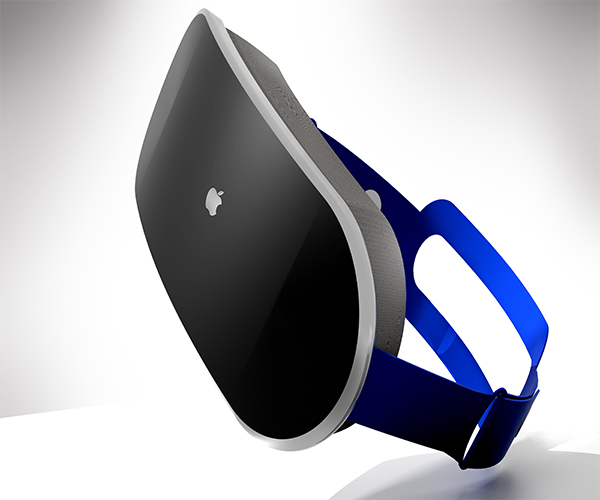
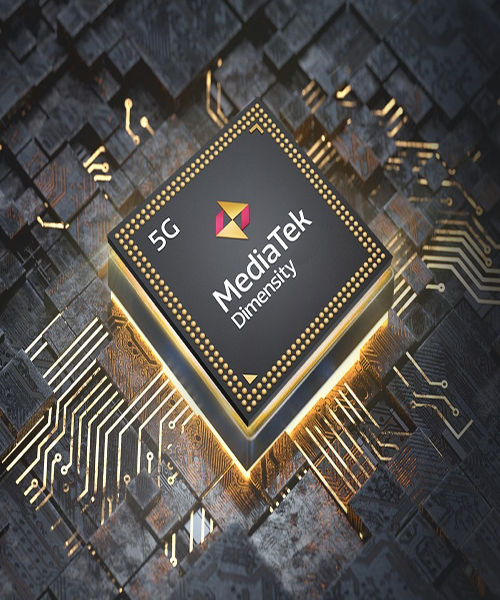
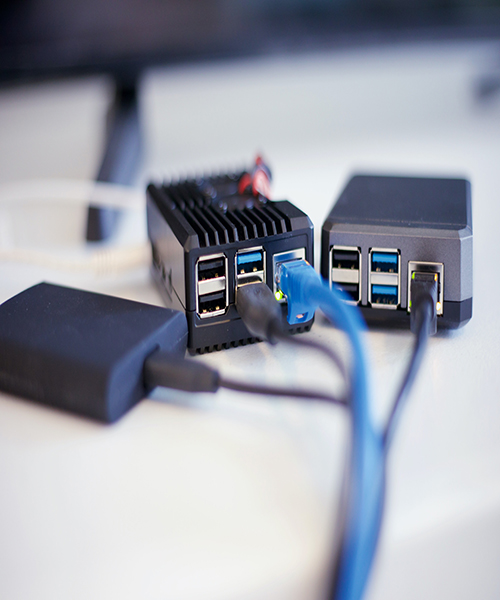
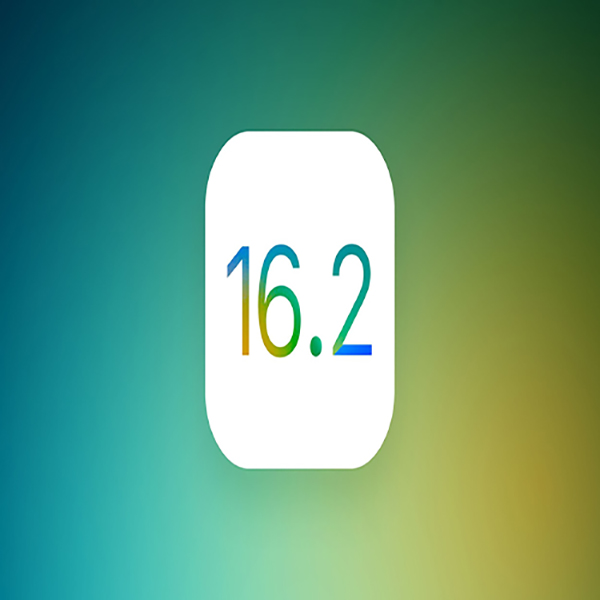

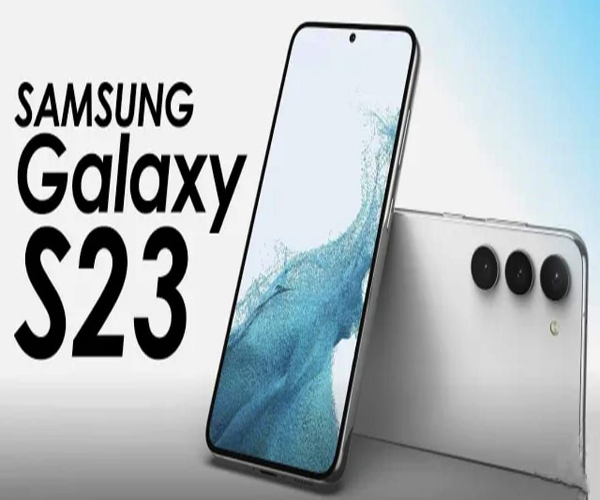
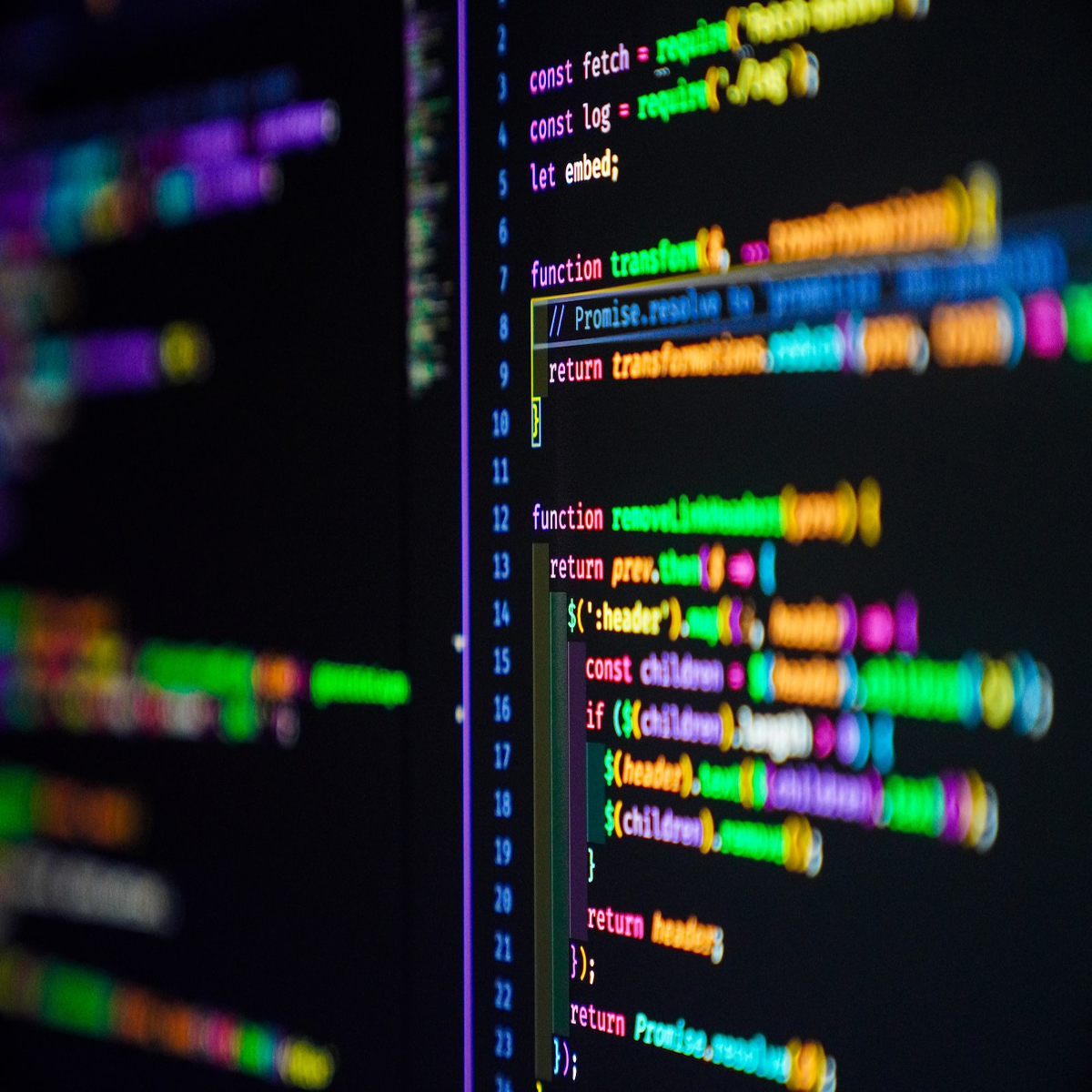
Amanda Martinez 5 days ago
I’ve been surfing on the web more than 3 hours today, yet I never found any stunning article like yours. It’s alluringly worth for me. As I would see it, if all web proprietors and bloggers made puzzling substance as you did, the net will be in a general sense more beneficial than at whatever point in late memory.
ReplyLandon Rollins 7 days ago
I read this post your post so nice and very informative post thanks for sharing this post
ReplyMarie Johnson 10 days ago
Thanks for sharing such a great information.. It really helpful to me.. I always search to read the quality content and finally i found this in you post. keep it up!.
Reply